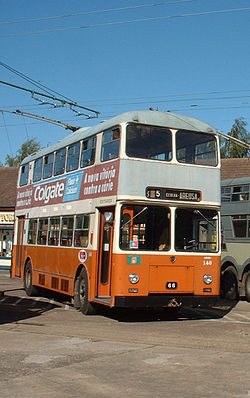
This article has multiple issues. Please help improve it or discuss these issues on the talk page . (Learn how and when to remove these messages)
|
Lancia 140 is an Italian trolleybus produced from 1967 to 1968. The vehicles are double decker. Until 1995 trolleybuses of this model were used in Porto, Portugal. This trolleybus had two doors. The electrical equipment was from CGE, and the body, with 58 seats, from Dalfa. 50 units were built.